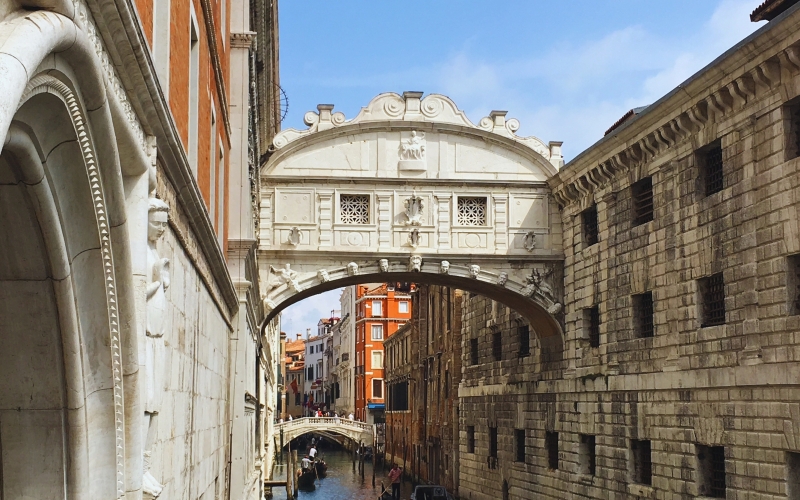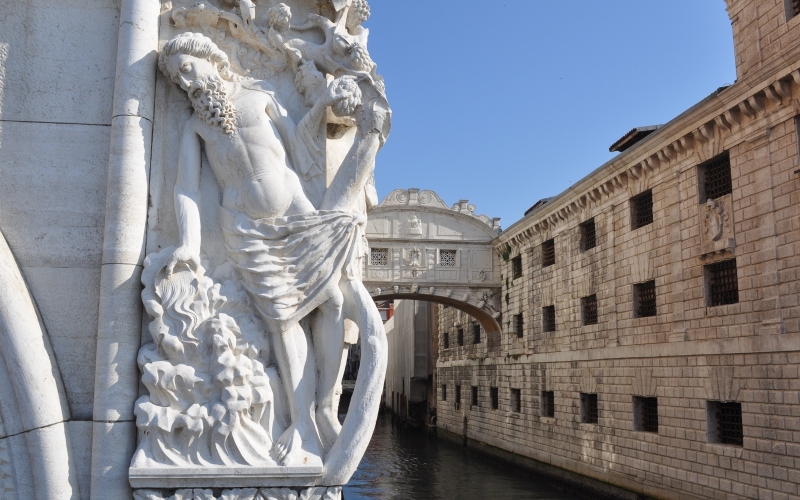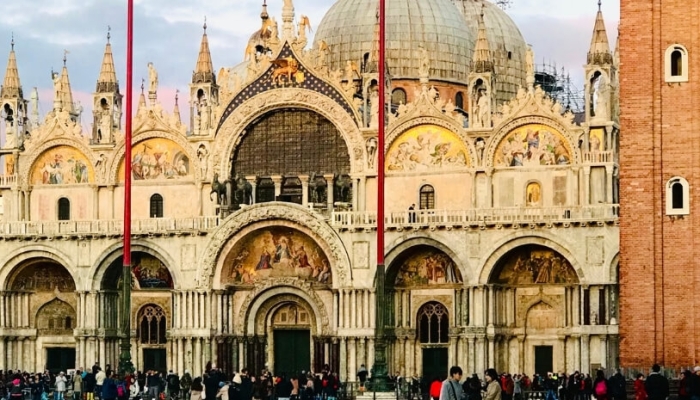
The Bridge of Sighs and the New Prisons
Discover the Secret History of VeniceHistory of the Bridge of Sighs: When and Why It Was Built
The Bridge of Sighs is one of the most iconic and romantic landmarks in Venice, but its origins are far from the love stories often associated with it. Constructed in 1600, the bridge connects the Doge’s Palace to the New Prisons of Venice, symbolizing the harsh reality of the Venetian justice system during the Renaissance period.
The name “Bridge of Sighs” comes from the legend that prisoners crossing the bridge would sigh deeply as they took their last look at the beauty of Venice through the small windows before being led to their cells or execution. Designed by architect Antonio Contino, the bridge is a masterpiece of white limestone. It is enclosed on all sides, preventing prisoners from escaping.
Before the construction of the Bridge of Sighs, prisoners were held in the Piombi or leads, a series of cells beneath the roof of the Doge's Palace. These cells were known for their oppressive heat in summer and freezing conditions in winter. As crime increased and space became limited, the Venetian Republic sought to build more secure and larger prisons. This need led to the construction of the New Prisons (Prigioni Nuove) directly across the canal from the palace.
The Bridge of Sighs represents more than just a physical connection between two buildings; it reflects Venice’s evolving justice system. By the late 16th century, the republic wanted to present itself as a modern and structured society, and part of that modernization was improving its penal system.
History of the New Prisons – Description and Importance in the Past
The New Prisons of Venice, or Prigioni Nuove, were commissioned in 1589 by Doge Pasquale Cicogna to address the inadequacies of the existing prison facilities at the Doge’s Palace. Construction began in 1591 and was completed in the early 17th century. The new complex was innovative for its time, featuring improved ventilation, larger cells, and a more organized layout. The prisons were built to house criminals, political prisoners, and debtors, reflecting Venice’s focus on enforcing law and order.
One key reason for building the New Prisons was the need to separate the judiciary and administrative functions of the Doge’s Palace from the incarceration facilities. By doing so, Venice aimed to streamline its legal processes and create a **more humane environment for prisoners, **though the cells were still cold, dark, and unforgiving.
The New Prisons are a three-story structure designed with thick stone walls and narrow windows, making escape almost impossible. The ground floor contained administrative offices, while the upper floors housed the prisoners. Some cells were reserved for high-profile inmates, often nobles or wealthy individuals awaiting trial.
For centuries, the New Prisons symbolized power and control, representing the Venetian Republic’s ability to enforce its laws throughout the city. The prisons reminded citizens and visitors that Venice was a place of strict justice and unyielding order.
One of the most famous prisoners to cross the Bridge of Sighs was the legendary Giacomo Casanova, who escaped from the Piombi in 1756. His daring escape is one of the many stories contributing to the bridge’s mystique and allure.
THE NEW PRISONS - PHOTO GALLERY
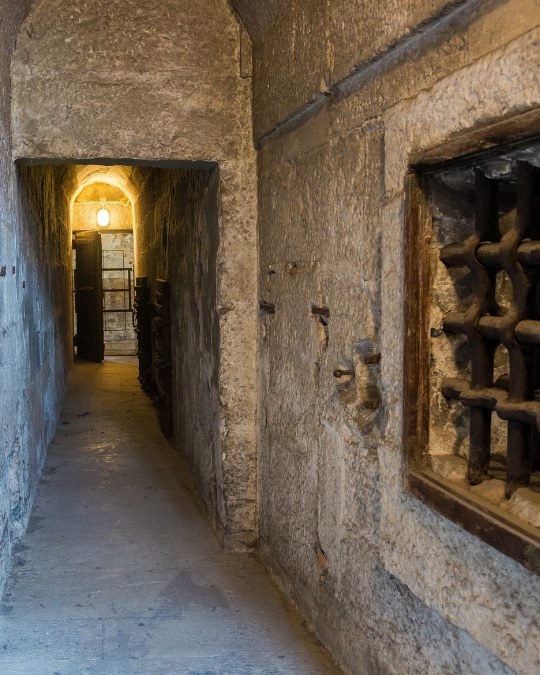
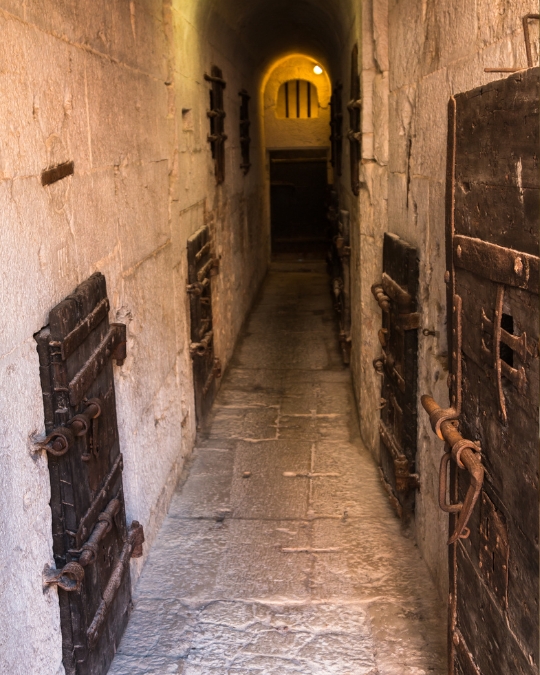

Architectural and Cultural Significance
The Bridge of Sighs is not only an important part of Venetian history but also a prime example of Renaissance architecture. Its design features intricate carvings and detailed reliefs that reflect the craftsmanship of Venetian artisans. The bridge’s baroque design, combined with its historical significance, makes it a popular attraction for tourists and history enthusiasts alike.
Visitors to Venice can view the Bridge of Sighs from the outside along the Ponte della Paglia, but to walk across it, one must join a guided tour of the Doge’s Palace and the New Prisons. This experience offers a glimpse into the justice system of the Venetian Republic and the life of prisoners who once inhabited the cells.
